- Home
- Japanese Characters
- Japanese Hiragana
Japanese Hiragana - the most basic
Japanese Alphabet you need to Master
Japanese hiragana (平仮名 or ひらがな), one of the Japanese alphabet, are the most basic characters used in Japanese today.
In fact in Japan, children start to learn hiragana when they are first taught to read. They never learn kanji before they become older.
Basically Hiragana has four functions...
1. Used As Furigana
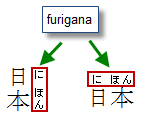
They are used to help in reading kanji, in what we called furigana (振り仮名 or ふりがな) or rubi (ルビ).
Furigana or rubi are the small hiragana texts written on top or right hand side of kanji to give the pronunciation of kanji.
For example, the small hiragana "にほん" in the red boxes of the right figure are the furigana of the kanji "日本".
2. Used As Okurigana

They are also used in suffixes following kanji characters to form Japanese verbs and adjectives, what we called okurigana (送り仮名 or おくりがな).
For example, in this Japanese verb "to eat" (食べる), the last two hiragana (べる) are the okurigana.
3. Used As Japanese Particles
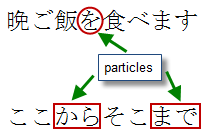
Besides, hiragana are used as Japanese particles. Japanese particles or 助詞 (joshi), are hiragana used in Japanese grammar when forming sentences.
For example, in the sentence 晩ご飯を食べます (ban go han wo ta be ma su - to eat dinner), を (wo) is the particle.
In the sentence ここからそこまで (ko ko ka ra so ko ma de - from here to there), から (ka ra) and まで (ma de) are the particles.
Two Japanese hiragana characters are pronounced differently when they are used as particles...
Particle は (wa)
When は (ha) is used as a topic marker, it is pronounced as "wa", same sound as わ. For example,
- わたしはジョンです
(wa ta shi wa jon de su)
Meaning: I am John.
"は" in the above sentence is the topic marker, so it is pronounced as "wa".
Particle へ (e)
When へ (he) is used as a direction marker, it is pronounced as "e", same sound as え. For example,
- わたしはにほんへいきます
(wa ta shi wa ni hon e i ki ma su)
Meaning: I am going to Japan.
"へ" in the above sentence is the direction marker, so it is pronounced as "e".
4. Used For Native Japanese Words
Hiragana are also used for native Japanese words not covered by kanji.
From my learning experiences, hiragana are more easier to memorize as compared to katakana. They got "sinked" into my head without much difficulty.
After few lessons, I can read out hiragana in a sentence naturally, without having to figure out the pronunciations.
It took me quite a while before I got familiarized with katakana readings. Don't worry, with more practices, they are not that difficult as it seems.
Some Japanese Hiragana Examples
Below are some examples of Japanese words using hiragana...
| Hiragana | Romaji | Meaning | |
| 1. | あお | a o | Blue |
| 2. | いす | i su | Chair |
| 3. | あさ | a sa | Morning |
| 4. | いえ | i e | House |
| 5. | すし | su shi | Sushi |
| 6. | とけい | to ke i | Watch/Clock |
| 7. | はい | ha i | Yes |
| 8. | いいえ | i i e | No |
| 9. | しお | shi o | Salt |
| 10. | かき | ka ki | Oyster |
| 11. | そこ | so ko | Bottom |
| 12. | いぬ | i nu | Dog |
Conclusion
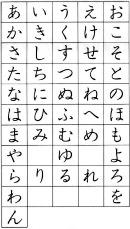
Get yourself familiar with Japanese hiragana by studying the hiragana chart. Make sure you know the pronunciation of each character before you proceed to katakana.
Get this book on hiragana "Let's Learn Hiragana" if you want to know more.
Disclosure: Please note that some links on this page are affiliate links. That means I will receive a small commission if you decide to make a purchase through those links, at no additional cost to you.
Buy me a coffee



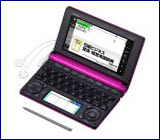
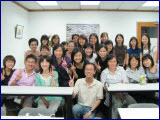
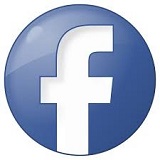

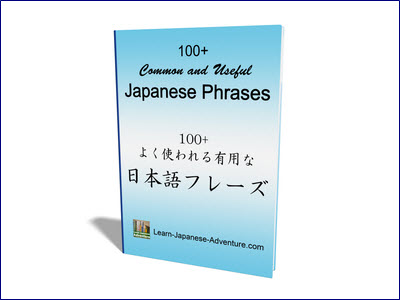
Facebook Comments
Don’t see the comments box? Log in to your Facebook account, give Facebook consent, then return to this page and refresh it.